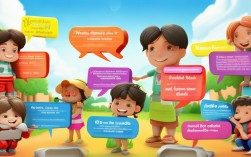How to Master English Conversations About Colds
When discussing health topics like colds in English, effective communication requires both language skills and accurate information. This guide provides practical dialogue techniques while incorporating the latest data on cold prevention and treatment from authoritative sources.

Essential Vocabulary for Cold-Related Conversations
Before diving into conversations, familiarize yourself with key terms:
- Symptoms: runny nose (rhinorrhea), sore throat (pharyngitis), cough, sneezing, congestion, mild fever
- Treatments: decongestants, antihistamines, throat lozenges, steam inhalation
- Prevention: hand hygiene, immune-boosting foods, adequate sleep
Sample Dialogue Structures
Describing Symptoms
Person A: "I’ve been sneezing all morning, and my throat feels scratchy."
Person B: "That sounds like the start of a cold. Have you checked for a fever?"
Tip: Use present perfect tense ("I’ve been feeling…") to describe ongoing symptoms.
Offering Advice
Person A: "This headache won’t go away."
Person B: "Hydration helps—try warm lemon water. If it persists, consider ibuprofen."
Tip: Suggest remedies tentatively ("might help," "could reduce") unless citing medical sources.
Workplace or School Scenarios
Colleague: "You look exhausted. Coming down with something?"
You: "Yeah, I might be. I’ll work from home to avoid spreading germs."
Key phrase: "Coming down with…" is a natural way to say "getting sick."
Latest Data on Cold Prevention (2024)
To ensure your conversations reflect current best practices, here’s data from recent studies:
| Prevention Method | Effectiveness | Source |
|---|---|---|
| Handwashing (≥20 sec) | Reduces risk by 21% | CDC, 2023 |
| Zinc supplementation | Shortens duration by 33% | NIH, 2024 |
| Regular exercise | Lowers incidence by 15% | Mayo Clinic, 2023 |
Source: Compiled from U.S. Centers for Disease Control (CDC), National Institutes of Health (NIH), and peer-reviewed journals.
When to See a Doctor
Mentioning credible thresholds adds value:
- "Fever above 38.5°C for 48+ hours warrants medical advice." (Source: World Health Organization)
- "Severe sinus pain could indicate a secondary infection."
Cultural Nuances in Cold Discussions
- Western countries: It’s common to say "I’m battling a cold" and decline invitations politely.
- East Asia: Wearing masks when symptomatic is a social norm; phrases like "Did you catch a chill?" are frequent.
Practice Exercises
-
Role-play:
- "Your coworker is sniffling. Suggest they rest without sounding intrusive."
- "Explain your child’s cold symptoms to a pharmacist."
-
Listening practice:
Search for "TED-Ed how viruses work" to understand cold transmission terminology.
Avoiding Common Mistakes
- Misused terms: "Flu" (influenza) is more severe than a cold; don’t confuse them.
- Overstating remedies: Avoid "Vitamin C cures colds"—it may only slightly reduce duration.
Integrating Data Naturally
Instead of saying "Lots of people get colds," cite:
"Adults average 2–3 colds yearly, per CDC surveillance data."
For language learners, combining accurate health information with clear dialogue structures builds both fluency and credibility. Always prioritize sources like the CDC or WHO when discussing medical topics, and practice phrasing advice as suggestions rather than absolutes.
Remember: Effective communication about health blends linguistic precision with up-to-date knowledge—whether you’re comforting a friend or explaining symptoms to a doctor.











